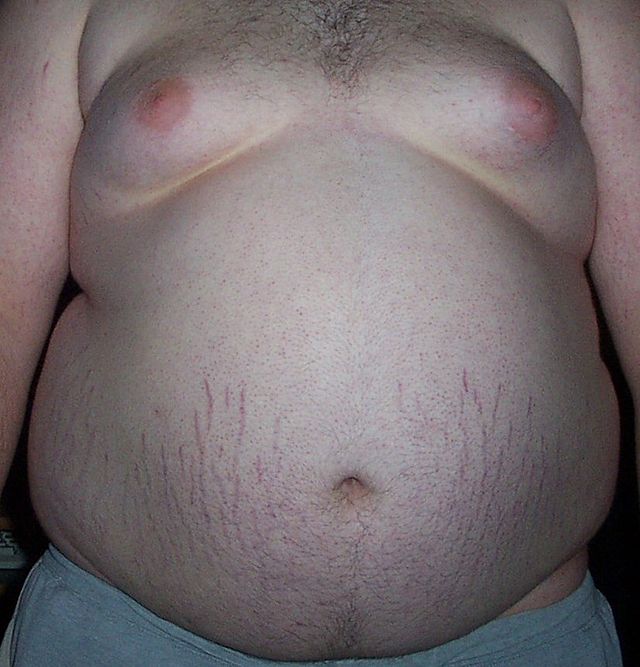What causes stretch marks?
 Thus stretch marks often appear during puberty or in weight-lifters, as both conditions result in rapid growth over a limited body area. Stretch marks are more severe when they develop in association with excess cortisone, which is a hormone produced by the adrenal glands. This is because cortisone weakens elastic fibers in the skin. This can occur as a result of using medication containing cortisone (e.g. long-term use of cortisone cream), or with diseases that cause production of excess cortisol, such as Cushing’s syndrome. Severe stretch marks are also associated with connective tissue disorders- disorders where the proteins that form the skin, soft tissues, or bone are made incorrectly. Examples of connective tissue disorders include Marfan syndrome and Ehlers-Danlos syndrome.
Thus stretch marks often appear during puberty or in weight-lifters, as both conditions result in rapid growth over a limited body area. Stretch marks are more severe when they develop in association with excess cortisone, which is a hormone produced by the adrenal glands. This is because cortisone weakens elastic fibers in the skin. This can occur as a result of using medication containing cortisone (e.g. long-term use of cortisone cream), or with diseases that cause production of excess cortisol, such as Cushing’s syndrome. Severe stretch marks are also associated with connective tissue disorders- disorders where the proteins that form the skin, soft tissues, or bone are made incorrectly. Examples of connective tissue disorders include Marfan syndrome and Ehlers-Danlos syndrome.
So what do stretch marks look like on a microscopic level? The skin is composed of two layers: a thin outer layer called the epidermis, and a thicker inner layer called the dermis. Stretch marks appear when the dermis tears. This tear heals, but leaves a scar behind- this is the stretch mark or stria. I commonly operate on areas of the body that have stretch marks, for example when performing an abdominoplasty. And when you look at the cross section of skin that has stretch marks, you can actually see where the dermis has torn.
Initially stretch marks appear red, pink or purple, similar to any scar. Over a period of months to years they fade to the same color as the surrounding skin. Laser treatments can help speed the fading process. There is no way to actually get rid of stretch marks, as this would require repairing the tears in the dermis (i.e. surgically excising the stretch mark, which would leave a scar). Some laser treatments such as SkinTyte and Profractional have shown promise in improving the appearance of stretch marks. But they tend to be very time intensive to do over large surface areas. And since the cost of laser treatments is related to the time involved, this can make these treatments cost-prohibitive.
Do you have any questions about stretch marks?
